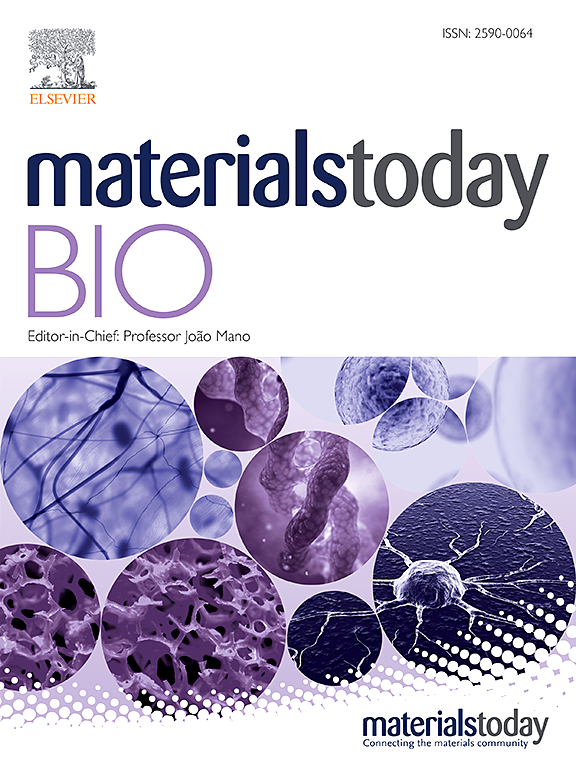An aggregation-induced emission-active lysosome hijacker: Sabotaging lysosomes to boost photodynamic therapy efficacy and conquer tumor therapeutic resistance
IF 8.7
1区 医学
Q1 ENGINEERING, BIOMEDICAL
引用次数: 0
Abstract
Therapeutic resistance is a major challenge in clinical cancer theranostics, often leading to treatment failure and increased patient mortality. Breaking this therapeutic deadlock, enhancing the efficacy of clinical treatments, and ultimately improving patient survival rates are both highly desirable and significantly challenging goals. Herein, we have developed a new fluorescent luminogen, QM-DMAC, which features aggregation-induced emission (AIE), and exceptional viscosity-responsive properties. The AIE-active QM-DMAC can specifically stain lysosomes in tumor cells, offering a high signal-to-noise ratio and enabling specific visualization of variations in lysosomal viscosity, such as those induced by inflammation or autophagy. Furthermore, QM-DMAC effectively generates reactive oxygen species (ROS) under white light irradiation, which precisely induces ROS-mediated lysosomal membrane permeabilization (LMP) and lysosome rupture. This ultimately causes severe cell damage and restores the sensitivity of tumor cells to radiotherapy and chemotherapy. Thus, QM-DMAC serves as a highly efficient lysosome-targeting photosensitizer and an excellent therapeutic sensitizer. This innovative “lysosome hijacking” strategy significantly maximizes the efficacy of photodynamic therapy, conquering therapeutic resistance and boosting the synergistic therapeutic effect when integrated with conventional radiotherapy or chemotherapy. It provides a novel approach to the design of theranostic agents for clinical cancer theranostics.

求助全文
约1分钟内获得全文
求助全文
来源期刊

Materials Today Bio
Multiple-
CiteScore
8.30
自引率
4.90%
发文量
303
审稿时长
30 days
期刊介绍:
Materials Today Bio is a multidisciplinary journal that specializes in the intersection between biology and materials science, chemistry, physics, engineering, and medicine. It covers various aspects such as the design and assembly of new structures, their interaction with biological systems, functionalization, bioimaging, therapies, and diagnostics in healthcare. The journal aims to showcase the most significant advancements and discoveries in this field. As part of the Materials Today family, Materials Today Bio provides rigorous peer review, quick decision-making, and high visibility for authors. It is indexed in Scopus, PubMed Central, Emerging Sources, Citation Index (ESCI), and Directory of Open Access Journals (DOAJ).
 求助内容:
求助内容: 应助结果提醒方式:
应助结果提醒方式:


